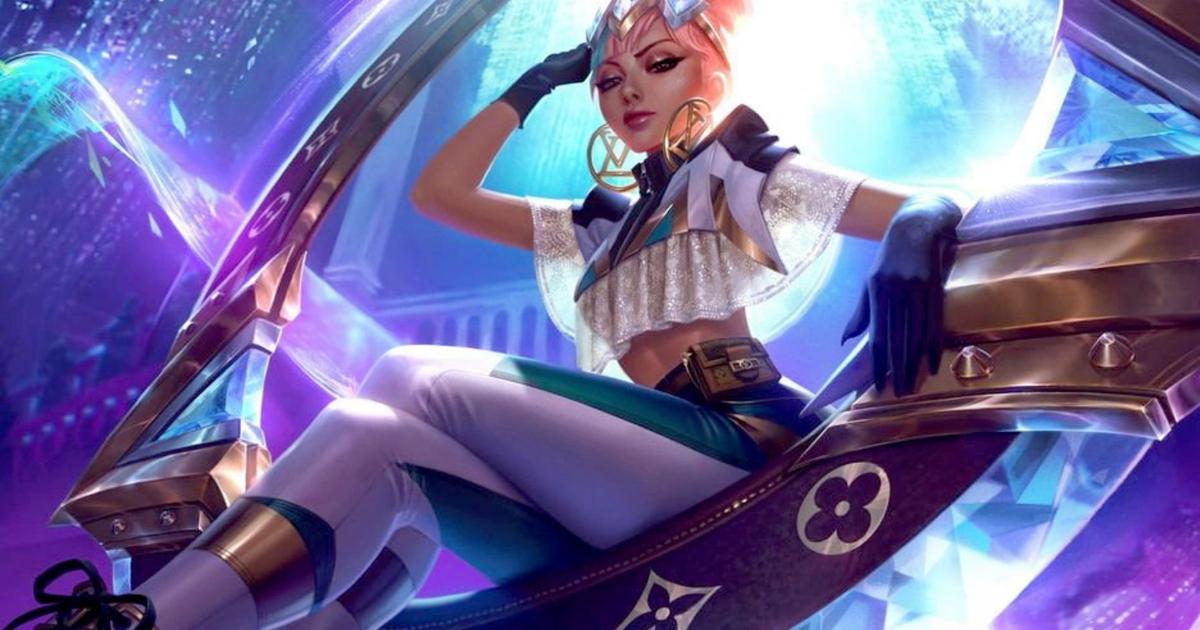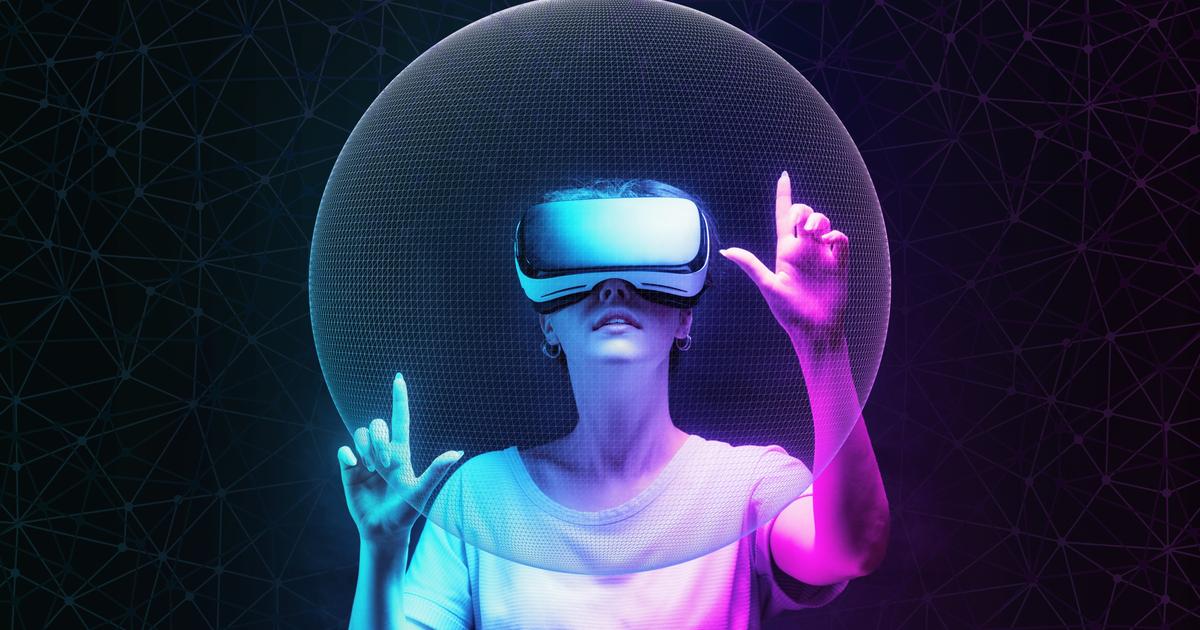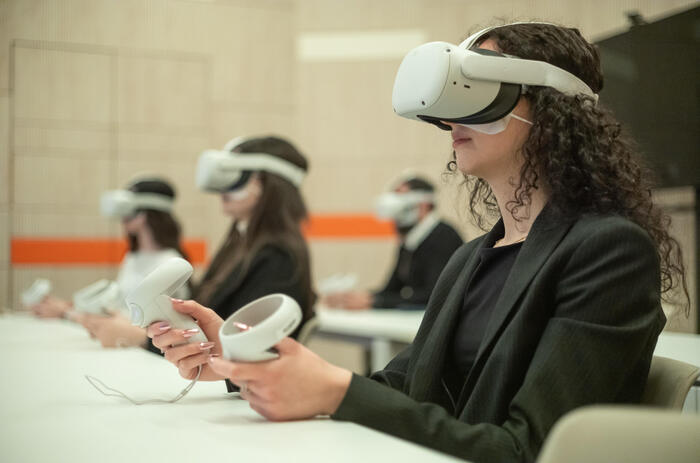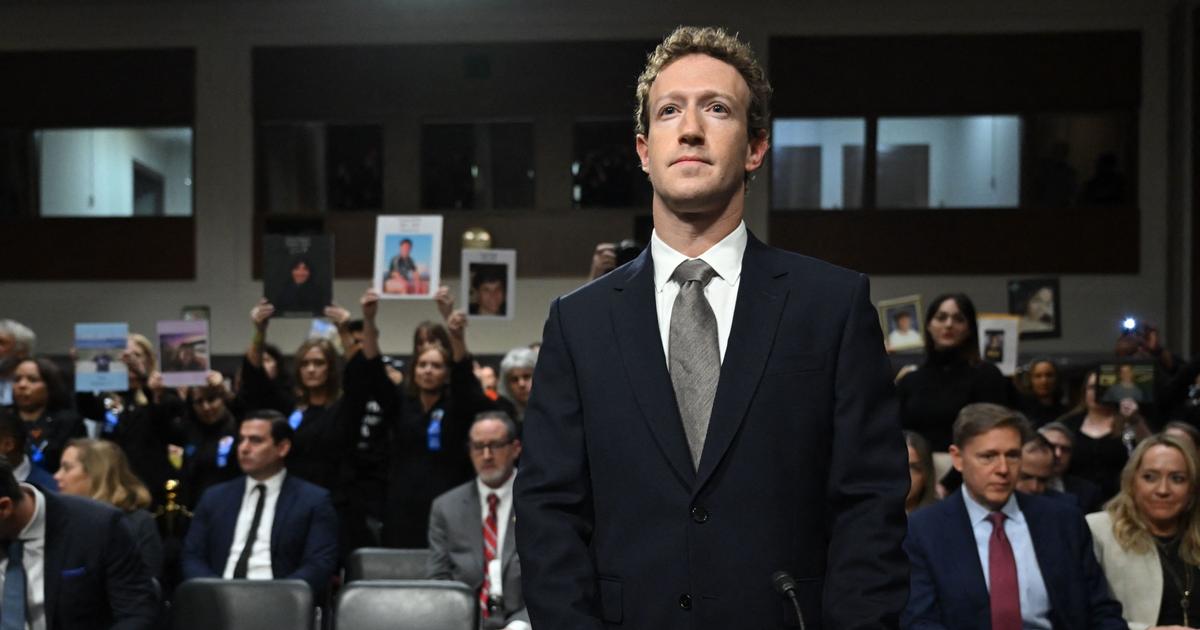You may not have noticed, but the world hasn't been the same since the end of 2021. More precisely since October 28, when Mark Zuckerberg announced that Facebook's parent company, Instagram, WhatsApp and Messenger were going to be called “Meta” (which comes from the Greek and means “after”, “beyond”).
More than a simple rebranding, for the youngest billionaire in the world, it was a question of signifying that he was moving on to chapter II of the history of the Facebook empire – battered on the stock market at the beginning of the month – whose foundations were laid. in his dorm room at Harvard in… 2004 – a century.
During his speech, the prophet Zuck also uttered a word that you have not finished hearing:
metaverse
– or metaverse in its French version, a contraction of “meta” and “universe”.
Or the Internet of the future, according to the boss of Facebook, in which he intends to invest no less than 10 billion dollars a year… The market was recently estimated by Bloomberg at 800 billion dollars.
According to a study by Morgan Stanley, the metaverse could even represent 10% of the luxury market in 2030, or 50 billion dollars.
A real cyber eldorado.
Read alsoElon Musk, Kate Moss, Emily Ratajkowski: celebrities are all getting into the NFT
In video, women in digital: the key figures
How do we access it?
A sort of parallel world that seems straight out of a sci-fi movie, the metaverse is a “persistent digital virtual world”.
Designed by machines, it is accessible via a VR (virtual reality) headset or on dedicated gaming platforms such as Roblox, The Sandbox or the South Korean app Zepeto.
You've never heard of it ?
It's normal, we are only at the beginning.
Currently, in the immersive parallel world of the metaverse, your avatar can move around, meet his friends, buy items or attend a concert (the one given by Travis Scott in Fortnite in 2020 gathered 12 million players).
All the usual social interactions can exist there, and in 3D, sometimes in a fairly basic graphics.
if
it's heavily steeped in video game "grammar", that's good because the metaverse comes from there.
Do you remember Second Life, this game from the 2000s in which you could make an avatar in your image evolve in a virtual universe?
It was one of the very first "metavers", a word coined as early as 1992 by American science fiction writer Neal Stephenson in his novel
The Virtual Samurai.
Digital fashion, the future of fashion?
The pandemic having only accelerated the changes in consumer habits, the metaverse is the new territory to explore for fashion brands, coupled with a real strategic challenge.
In short, everyone is getting into
digital fashion
, and companies are even having a
Chief Metaverse Officer
.
Two ways of doing digital fashion are emerging: either offering new creations, purchasable online, to revamp your virtual self on social networks (this is what the brands Republiqe, The Dematerialised, This Outfit Does Not Exist, the Zero10 or DressX apps), or directly investing in metaverses from video games via collaborations and offering “virtual experiences”.
This is what the biggest luxury brands are doing, with a fairly new frenzy.
From 2019, Vuitton offered to dress its avatar in the game League of Legends in creations signed Nicolas Ghesquière.
In 2020, Marc Jacobs invited himself to Animal Crossing, and Christian Louboutin to the
South Korean
social gaming app Zepeto.
In 2021, Balenciaga invested in the famous Fortnite game, while Gucci offered Internet users the opportunity to visit its immersive “Gucci Garden” on Roblox.
As for the Chanel house, it decided at the end of 2021 to join forces with choreographer Blanca Li for an immersive dance show,
Le Bal de Paris
.
A unique sensory experience via a virtual reality headset, in which you could choose your outfit,
Why is luxury interested in it?
The first of its kind, the Decentraland platform announced in December that it would host a fashion week from March 24-27.
On the program: immersive fashion shows, pop-up shops and
after shows...
Patrizio Miceli, founder and president of Al Dente, an agency that offers luxury brands tailor-made strategies for the metaverse, confirms an acceleration of the movement: “We feel a form of feverishness, urgency among brands.
For luxury houses, the metaverse is the royal road that allows people to take part in brand storytelling, to deploy a universe, to live new experiences and to consume while playing.
The idea is not to reproduce an already existing luxury lifestyle, nor to copy reality or to flee from it, but to amplify it, to create bridges.
The wave is going to be huge, even bigger than the arrival of Instagram or TikTok”.
And a holy grail for e-commerce.
These models who move the lines
In images, in pictures
See the slideshow20 photos
See the slideshow20 photos
Who are the buyers of this new world?
In October 2021, a digital dress called “Glass Suit” and signed Dolce & Gabbana snatched more than 1 million dollars, a record.
The auction on UNXD, a dedicated marketplace, panicked the counters: the nine pieces of the “Collezione Genesi” (two dresses, three jackets, a suit, two crowns and a tiara) soared to more than 6 million dollars in all.
Fashion there was both digital and physical – the happy buyers of digital pieces having the right to have a “real” version made to measure in the Milanese workshops of the house.
With, as a bonus, the right to attend the brand's couture events for a year.
For Patrizio Miceli, “potential customers are people who have made their fortunes in cryptocurrencies and who have invested in the metaverse,
Full screen
One of nine pieces from Dolce & Gabbana's Genesi collection, available as an NFT.
Press office
Yes, but not only.
Because digital fashion also knows how to be accessible.
For a few tens of euros, you can afford a digital creation.
In December 2021, Zara offered its customers a collection on Zepeto, designed with the South Korean artistic collective Ader Error.
These virtual clothes for avatars were also sold in physical form in some Zara stores in the real world!
Objective: to attract young people.
"It is crucial to build a community, to learn the vocabulary and the environment", analyzes Patrizio Miceli.
Because the Alpha generation (the one that comes after Gen Z) is melted metaverse.
In the first quarter of 2021, the Roblox game had 199 million active users each month (67% of which were under 16), when Zepeto posted 2 million
So the kids' favorite brands are stepping up to the plate: last December, Nike announced the acquisition of the start-up RTFKT (pronounced "artifact"), specializing in the creation of "virtual sneakers", for an undisclosed amount.
At the same time, the eternal rival Adidas announced a collaboration with the “Bored Apes” collectibles, a sort of hyper-trendy collectible digital avatars, which can be bought in Ethereum cryptocurrency.
An express sale that totaled more than $22 million!
Full screen
Virtual sneakers Nike × RTFKT Service Presse
Why treat yourself to a virtual bag?
Last year, a virtual bag from the Gucci brand (Dionysus GG model) was negotiated more expensive in the digital world than in the real world!
Listed for 475 Robux (the currency of Roblox), it finally soared to 350,000 Robux (4115 dollars), almost ten times more.
In store, the luxury accessory displays a price of 2450 dollars (about 2100 euros).
So why buy a digital Gucci bag?
To be the first and only one to wear it in the metaverse, of course!
Because as with luxury IRL ("
in real life
", in real life), possession is statutory here.
Digital fashion creations work – like works of art – in “NFT”, the famous
non-fungible tokens,
these “non-fungible tokens”.
They are unique, traceable and inviolable, thanks to blockchain technology.
When customers buy NFT-certified digital fashion, they are mostly buying exclusivity.
Basically, a ticket to some sort of metaverse VIP club.
For Michael Stora, psychologist and psychoanalyst, keen observer of the digital world and author of
(a) Social Networks (
Éditions Larousse), "the metaverse will amplify this idea that regardless of the experience lived, what matters is to be there, and to show it”.
Full screen
At the British Fashion Awards 2021 was awarded the first Fashion Award for Metaverse Design.
Press office
How to fight against counterfeiting?
Last January, Hermès filed a complaint against a certain Mason Rothschild for counterfeiting in the metaverse.
This American artist offered for sale on the dedicated OpenSea platform a series of 100 digital works called "MetaBirkins", a sort of "NFT reinterpretation" of the house's iconic bag.
In the 47-page file presented by the saddler, it is indicated that the total volume of sales of the MetaBirkins would have exceeded 1.2 million dollars, with unit prices between 5 and 15 Ethereum (between 15,200 and 45,100 dollars).
If the artist invokes the freedom of artistic expression, Hermès denounces an attack on his brand image and the notion of intellectual property, qualifying these NFTs as “false Hermès products”.
This first reshuffles the cards of the – hyper-speculative – NFT market,
and questions the very notion of “brand”.
For the moment, the prestigious Parisian house has not yet launched into the big “metabain”.
At LVMH too, we remain cautious.
Bernard Arnault, CEO of the luxury group, recently declared: “The metaverse is a purely virtual world and, until now, we are in the real world and we sell real products […].
If done well, it can probably have a positive impact on brands' businesses.
But selling virtual sneakers for 10 euros does not interest us.
so far we are in the real world and we are selling real products […].
If done well, it can probably have a positive impact on brands' businesses.
But selling virtual sneakers for 10 euros does not interest us.
so far we are in the real world and we are selling real products […].
If done well, it can probably have a positive impact on brands' businesses.
But selling virtual sneakers for 10 euros does not interest us.
Listen: the editorial staff podcast
Should we be afraid of this universe?
With its avatars, retinal helmets, and digital mirage-like reality, the Metaverse looks furiously like The Matrix
,
released in 1999, where machines had enslaved humans and fashioned an illusory parallel reality to control them within.
For Michael Stora, we have definitely entered the era of the "gamification of the world" (of
game,
in English “game”): in short, we live for immediate gratification.
The psychologist warns of the psychological consequences of this staging of oneself in a hyperfactitious universe, which could increase social phobias, especially in teenagers.
“There is a form of decompensation when you come back to the real world, when you leave the virtual universe where you are light and free from the constraints of the body… It's a bit like a descent of ecstasy… The first social networks were addictive, but with the metaverse, we risk going from soft drugs to hard drugs,” he predicts.
So, soon all metazinzins in the metaverse?
The future will tell !


/cloudfront-eu-central-1.images.arcpublishing.com/prisa/QHZ4AHIQQNAC3BYCHVVXLMXHQU.jpg)






